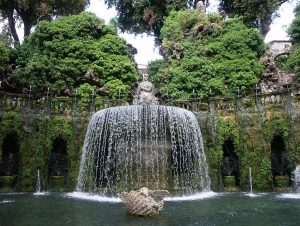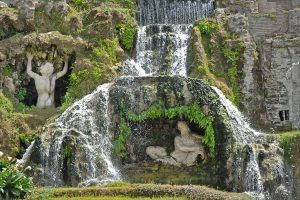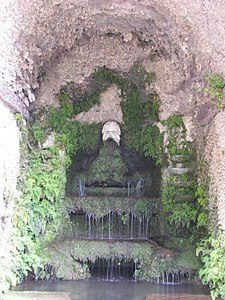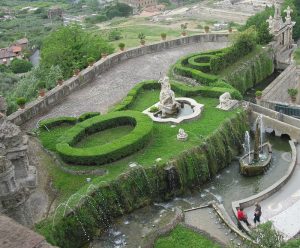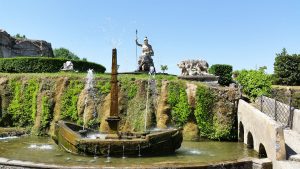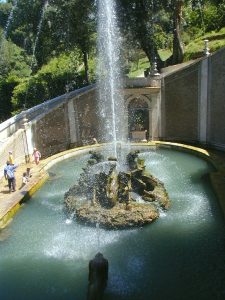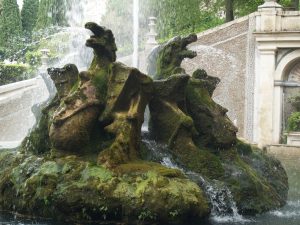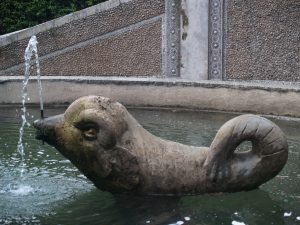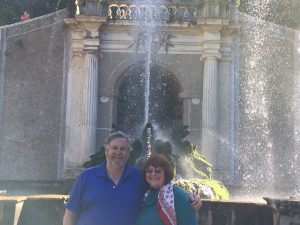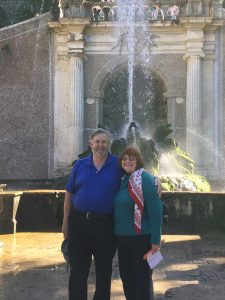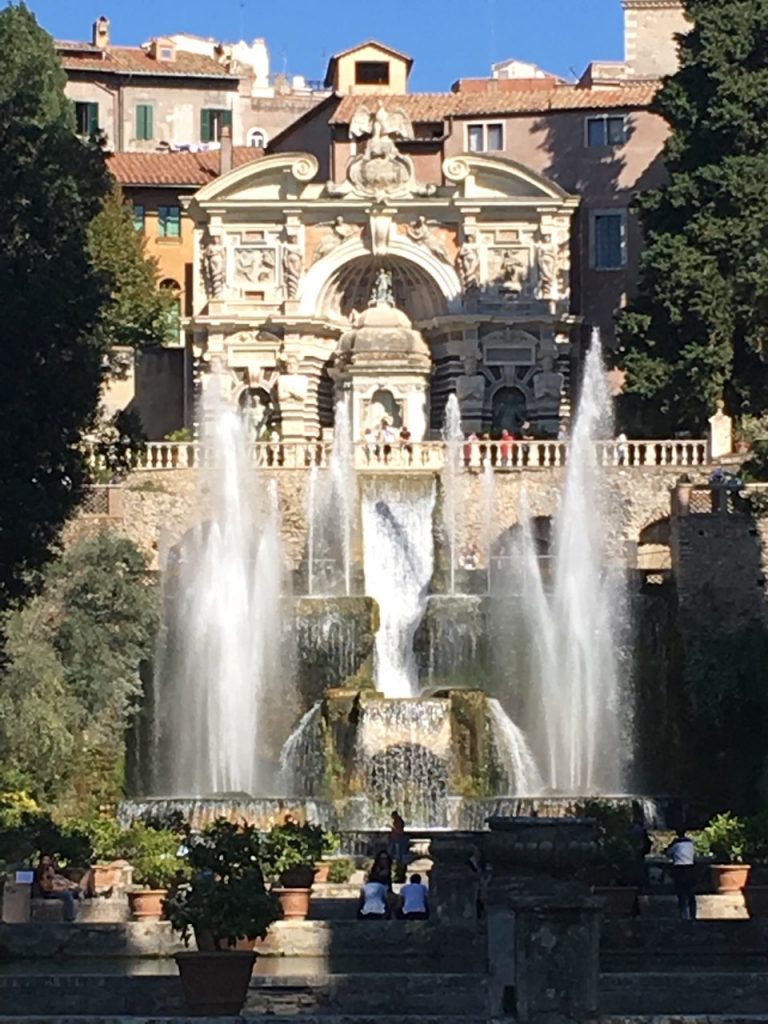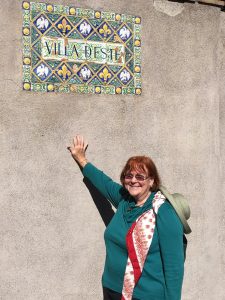
It was time to hit a garden, or in this case, a showcase of Fountains. So, we packed up and headed towards Tivoli and a visit to the Villa d’Este. After cruising around to find parking, we finally found a spot and headed to the Villa with a lunch break prior to going on our tour. The Villa is really a combination of a nice “home” and a very large garden with multiple water features. We skipped the interior of the Villa and headed straight to the garden.
The Villa d’ Este is a 16th-century villa in Tivoli, near Rome, famous for its terraced hillside Italian Renassance garden and especially for its profusion of fountains It is now an Italian state museum, and is listed as a UNESCO world heritage site.
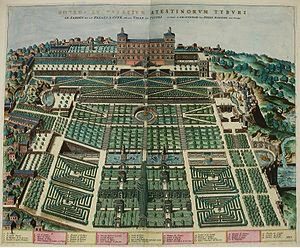
The Villa was commissioned by Cardinal Impolite II d’Este (1509–1572), second son of Alfonso I d’Este, the Duke of Ferrara and grandson of Pope Alexander VI, along with Lucrezia Borgia. The Este family had been lords of Ferrara since 1393. He was a lavish patron of the arts, supporting among others the sculptor Benvenuto Cellini, the musician Pierluigi da Palestrina and the poet Torquato Tasso. While his income was enormous, he was always in debt.
Canals were dug and two hundred meters of underground pipes were laid to carry the water from the artificial mountain under the oval fountain to the rest of the garden. Following the aesthetic principles of the Renaissance, the garden was carefully divided into regular units, or compartments, each thirty meters across, laid out along a longitudinal median axis, with five lateral axes.
The plans for the villa itself were carried out under the direction of the Ferrarese architect-engineer Alberto Galvani, court architect of the Este.
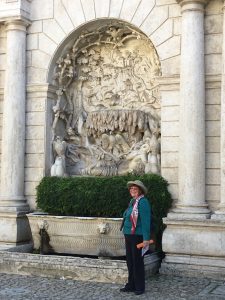
Between 1850 and 1896, the Villa was owned by Cardinal Gustav von Hohenlohe, who restored the dilapidated villa and the ruined and over grown gardens, which now appealed to the romantic sentiments of the period. The villa once again attracted artists, musicians and writers. The composer Franz Liszt made several visits between 1865 and 1885, and wrote two pieces of music, Les Jeux d’Eau a la Villa d’Este and I Cipressi.
After the First World War, the villa was acquired by the Italian State, which began a major restoration in 1922. The famous water organ, which had not functioned for many years, was restored and now plays again each day for visitors.
The Courtyard is placed where the original cloister of the convent was located. It was constructed in 1566–67, and is surrounded by a gallery. The centerpiece of the courtyard is the Fountain of Venus, the only fountain in the Villa that retains its original appearance.
The fame and glory of the Villa d’Este was above all established by its extraordinary system of fountains; fifty-one fountains and nymphaeums, 398 spouts, 364 water jets, 64 waterfalls, and 220 basins, fed by 875 meters of canals, channels and cascades, and all working entirely by the force of gravity, without pumps.

The garden plan is laid out on a central axis with subsidiary cross-axes, refreshed by some five hundred jets in fountains, pools and water troughs. The Aniene, which is partly diverted through the town, a distance of a kilometer, supplies the water and, originally, by the Rivellese spring, which supplied a cistern under the villa’s courtyard (now supplied by the Aniene too). The garden is now part of the Grandi Giardini Italiani.
You can see from the pictures were are LOTS of fountains – and many with interesting sculptures and water spouts. After walking through the area for a couple of hours we headed up through the Garden back to the Plaza above for a Gelato and to continue our drive to Perugia.

